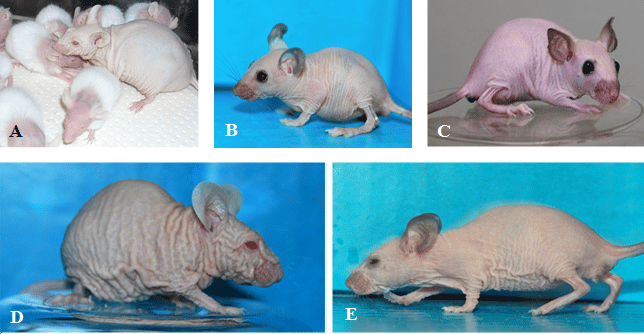Hairless Congenics for Dermatology StudiesB6.HR1-Hrhr/Rbrc (RBRC01223)
|
The homozygous Hrhr/Hrhr mutant mouse is widely used in dermatological studies as various skin tests can be conducted without shaving [1, 2]. To utilize the hairless characteristics in various genetic backgrounds, four congenic strains of the Hrhr gene have been generated by using the Hos:HR-1 mouse as the donor strain and performing successive backcrossing to C57BL/6JJcl (RBRC01223), BALB/cAnNMs (RBRC01417), C3H/HeNCrlj (RBRC01418) and MSM/MsRbrc (RBRC01222) strains as the recipients. The Hos:HR-1 donor strain has been established at HOSHINO LABORATORY ANIMALS, CORP. (Masayuki Hoshino, President) from Skh:HR-1 mice imported in 1987 from Temple University Skin and Cancer Hospital, Philadelphia, United States. The homozygous Hrhr/Hrhr mutant exhibits hair loss after growth of the first hair coat and does not grow a second coat. Shedding of hairs starts around the nose at 14 days of age and spreads posteriorly to the base of the tail. ALOPECIA UNIVERSALIS CONGENITA (OMIM ID: 203655) is caused by a mutation in the human homolog of the mouse “hairless” (HR) gene. These hairless congenic mice are therefore useful for various dermatological studies.
| Depositor | : | Dr. Atsushi Yoshiki, Experimental Animal Division, RIKEN BioResource Center | |
| References | : | [1] | Brooke HC, Hairless mice, J Hered 17:173-174, 1926. |
| [2] | Sundberg JP (ed.), Handbook of Mouse Mutations with Skin and Hair Abnormalities: Animal Models and Biomedical Tools, 1994. | ||






